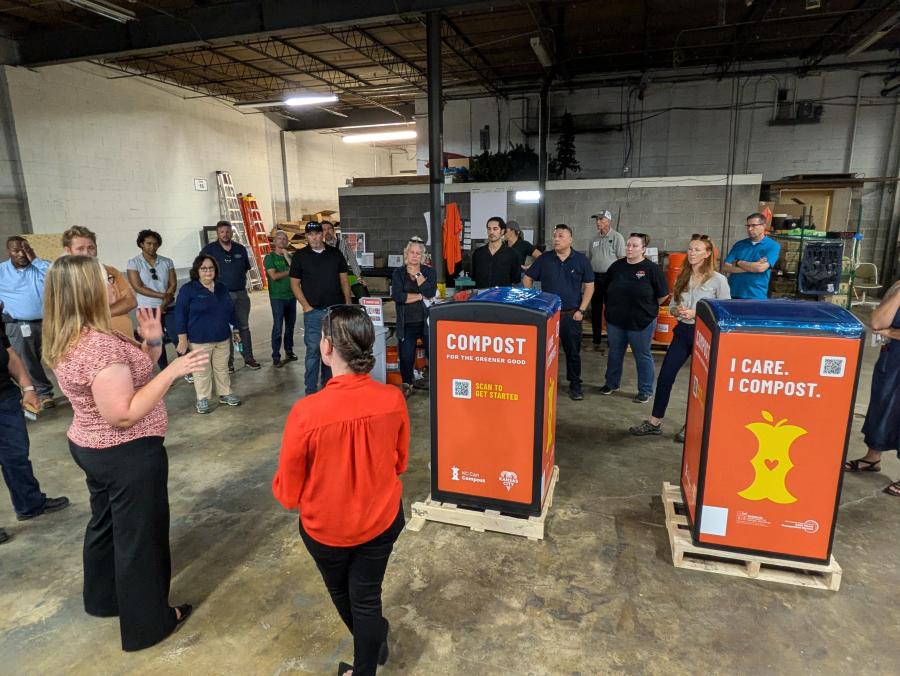Missouri Organic Recycling (MOR), located off of Old 210 Highway in rural Liberty, has a more industrialized process than the family operation at Urbavore. Heavy machinery breaks down, separates and moves the material around for aerobic composting that minimizes methane gas emissions (a major benefit of this waste method compared to the landfill). The heavy-duty equipment is necessary; MOR receives, on average, 87,000 pounds of waste daily, and converts it into commercially available compost and mulch. That accounts for over 270,000 tons of garbage diverted from traditional single-use trash landfills since 1992.
Over the rumble of trucks and loaders, Kevin Anderson, owner and vice president of marketing for MOR, shared the history of the company dating back to their days composting yard waste for Kansas City residents. To make the business more economically sustainable, they opened up their process to a less seasonal byproduct — food waste — in the early 2000s. MOR purchased its first loader through a MARC Solid Waste Management District grant.
The organization has expanded to several processing sites around the region. But despite the mountains of material at the Northland site alone, the organization is operating at full capacity (and that’s with only 2% of regional food waste being diverted from landfills). MOR collects from 350 customers including restaurants, grocery stores, residents, offices and schools. Expanding wholesale operations like MOR would support a transformation from regional methane-producing garbage output into significant regional soil coverage on an industrial scale.
To their credit, the organization has rolled out new innovations for the region to process waste and create enriched soil material. A large Tiger Depackager machine slices up incoming packaged food waste, mixes it with 50 gallons of water per minute, ejects the plastic and cardboard packaging and pumps the liquid food waste slurry to be mixed with leaves for compost.
"This isn't something that a lot of composters do," Anderson said. "It's not something that a lot of composters want to do."
Another cutting-edge process that MOR is working on is putting their biochar machine (funded by the Environmental Improvement and Energy Resources Authority) to work. Wood chips are heated in a sealed container without oxygen and emit combustible gases that are burned in a separate chamber. The heat generated can produce steam that can turn a turbine and produce electricity. This represents a waste-to-energy system that produces no toxic emissions, and the byproduct (the biochar) has proven to be a productive soil amendment itself. This byproduct can also be processed into building materials that lock up and sequester carbon for long periods of time.
On the van ride, tour participant and organics specialist for MOR Stan Slaughter took out a gallon-sized resealable bag filled with even more cutting-edge material inside. The aggregate smelled like campfire. Slaughter described it as "humi-soil," a compost alternative that requires no turning or aeration. It ferments biomass materials for six months (at a lower cost) and produces a soil inoculant that restores soil's fungal and bacterial balance. The bacterial photosynthesis that occurs captures nutrients, and actually makes water within the soil without the need for rain.







